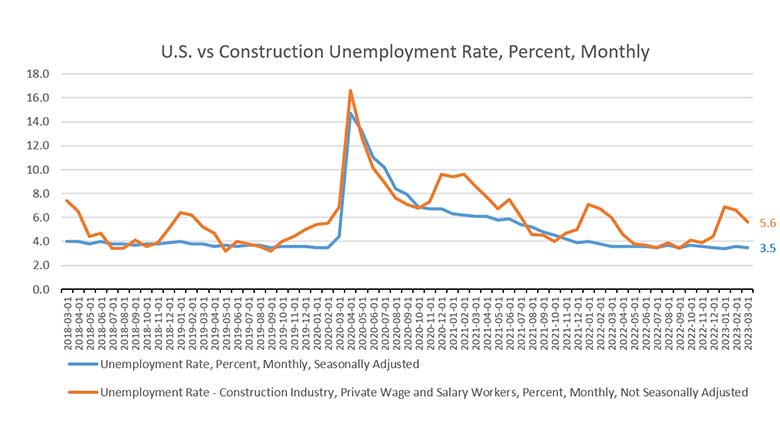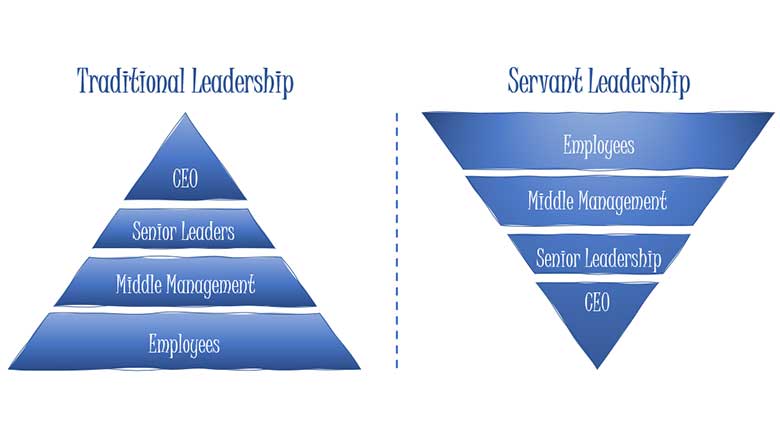Michael Copp: Hybrid workplaces need locker room leadership
Don’t let your employees feel disconnected and invisible.

Image courtesy of Nuthawut Somsuk / iStock / Getty Images Plus.
Three Things you need to know:
- 30% of U.S. workers are working in a hybrid workplace environment;
- Increasing numbers of employees in hybrid and remote workplaces are feeling disconnected and less visible to or appreciated by leadership; and
- Locker room leadership can move an organization toward a holacracy that distributes power and decision-making throughout the company, and is believed to increase employee engagement, innovation, adaptability and followship.
Hybrid workplaces are not ending anytime soon
Rebecca Ray, Ph.D. (2023), executive vice president of Human Capital at The Conference Board recently reported during a webinar that 30% of U.S. workers are working within a hybrid work environment, and 13% are fully remote. The reality is, however, that traditional corporate leadership has not changed very much, but expectations of leaders have expanded exponentially given the variable nature of in-office, hybrid and remote workplaces. It can feel like leading a team through an obstacle course designed by Dutch artist M.C. Escher.
Employees are expecting equitable work flexibility, and with historically low U.S. employment at 3.5% and construction unemployment at 5.6%, there is a risk for companies that do not offer hybrid or remote work benefits.

However, that is putting a strain on technology needed to maintain virtual systems and provide organizational connectivity. Ironically, more remote employees are feeling disconnected and less visible to or appreciated by leadership. Notwithstanding best efforts, Kristin Ryba (2021) with Quantum Workplace reported in her article, “8 Tips for Keeping Remote Workers Connected,” that one risk of remote work is that employees can “feel disconnected from the company culture and have a harder time creating a sense of belonging that binds employees to their organization and office community.”
P-H-C leadership in a hybrid world
Leadership within the plumbing and HVACR industry is particularly consequential given the health, welfare and safety implications of products and services provided to customers. There is little room for error, and leaders must trust that their teams are collaboratively productive, motivated and have the best interests of and value alignment between themselves, their customers and companies at heart. This includes effective and efficient coordination between field technicians and their hybrid or remote office support teams.
P-H-C Leaders are stretched thin in what has evolved into a disruptive and ever-changing business environment. They are faced with ongoing changes including an impending recession; ongoing supply-chain challenges; increasing costs of money; continued employee worries about health risks related to the pandemic; increasing focus for work-life balance and managing mental wellness; potential shortening of the workweek; higher employee turnover due to lower emotional connectedness with employees and the company; and greater geographic reach for employees to additional employment opportunities. To combat these disruptions, better leadership effectiveness can be achieved by adopting ‘Locker room leadership’ principles.
Locker room leadership
I was not an athlete growing up other than running track in high school — and you could always spot me in the back of the pack with my legs flailing about like a newborn giraffe on an ice rink. But there were clearly two fulcrums of leadership amongst the team and coaches —one informal and one formal. The team informally self-policed itself to ensure teammates practiced on a regular basis, studied game plans and encouraged each other to excel. The coaches tended to be the more formal leadership structure that oversaw practices, taught to enhance skills and abilities, and motivated the team throughout the season. If you were called in by the coach, you can bet you either let the team down or did something terrific.
I was intrigued with the term “locker room culture” and thought about how those principles can be applied to plumbing and HVACR companies. Michelle Ray (2017) wrote in her article, “Three Characteristics of A Winning Locker Room Culture,” that “many in sports see the locker room as essential to building team chemistry, motivation and morale. No athlete relishes the thought of returning to a locker room that is devoid of camaraderie and a lack of leadership.” Ray (2017) notes that “A toxic sports team locker room is like a toxic workplace culture; negative energy builds on itself, morale continues to sink and the ability to regain momentum feels like an impossible goal. In short: everyone wants “out.”
To create a winning locker room culture- much like that within an organization- Ray (2017) offered the following to create a cultural shift: (ibid)
- Positive leadership — “The influence of an affirming, confident leader is a pre-requisite for team success…Great leaders …can lead from the sidelines and watch their team “play,” without setting foot on the field.”
- Ensuring respect of one’s peers — “It is natural for teams to comprise of conflicting personalities, divergent backgrounds, and different communication styles. Similarly, a locker room culture that reflects, celebrates, and appreciates divergent points of view is often a sought–after place to be.”
- Adapting a “winning” mindset — “The conscious practice of projecting a positive outcome and strengthening one’s mental outlook regardless of adversarial circumstances. Self-actualization is the tenet of many accomplished athletes. They possess the ability to hone resilience, project achievement, to visualize… and ultimately realize their maximum potential.”
Leaders should identify, develop and mentor informal leaders amongst their employees who can help build and maintain camaraderie, motivation and morale within its ‘breakroom.’ They can help create and maintain value alignment between the organization and employees that ultimately builds a trusting culture. This can move an organization toward a holacracy that distributes power and decision-making throughout the company. It replaces traditional hierarchical structures with self-organizing teams that work toward common goals. This approach is believed to increase employee engagement, innovation, and adaptability.
As Jon Gordon (2015) and Mike Smith (2015) wrote in their book, “You Win in the Locker Room First: 7C's to Build a Winning Team in Sports, Business, and Life,” “Culture consists of the shared purpose, attitudes, values, goals, practices, behaviors, and habits that define a team or organization.” Whether it’s a locker room or a break room, people do not join organizations — people join people. Conversely, when they want out, people don’t leave the organization — they leave its people. Hybrid workplaces require a shift from people serving their repressive leaders to servant leaders serving their people and asking how they can help position their teams for success.
Servant leadership
Most of the autocratic leaders I worked for over the years believed that their people worked for them. They had worked hard to ascend into their roles, and in many cases, they led through fear, aloofness, and to borrow a phrase used by Clementine Churchill to describe living with U’K’s Prime Minister, Winston Churchill, staff was relegated to “living around their edges.”
Coined by Robert K. Greenleaf (1970) in his essay, “The Servant as Leader, Servant Leadership,” is the exercise of shifting from power by a single individual to empowering teams to perform at their highest potential on behalf of the organization.

UK Teacher, writer and academic Jonathan Sandling (2014) wrote in his article, “Ten Principles of Servant Leadership,” "in order to be an effective Servant Leader, Robert Greenleaf proposes that you must demonstrate the following … qualities” that include listening intentionally “to their employees who can help build and maintain camaraderie;” relying on influence and collaboration “rather than authority and delegation;” learning from the past, understanding present challenges and “the likely outcomes of any future decisions;” and believing that employees provide “intrinsic value beyond… the work they do... [are] committed to both the personal and professional growth of [each] individual within their organization” to build a sense of community and harmony. Tom Morris (1997), author of “If Aristotle Ran General Motors,” described harmony as “good people in good working relationships, forming together a good community out of which powerful partnerships can spring.” By chance, you can assess your proclivity toward servant leadership by filling out Sandling’s: Servant-leadership-questionnaire-self-assessment.
Whether it’s a locker room or a break room, people do not join organizations — people join people. Conversely, when they want out, people don’t leave the organization — they leave its people.
Hybrid workplaces necessitate grateful leaders who lead people with appreciation as noted by Judith W. Umlas (2018). They “[Inspire their] team and [bring] out the best in [their] people by dramatically increasing levels of engagement, productivity, and willingness to take initiative.” Leading with gratitude begets empowerment, which begets trust, which then begets loyalty toward the organization. Gratitude inspires early adopters within the company to innovate and adapters to follow.
For more great information from the PHCC Business Intelligence Team, check out www.phccweb.org/membership.
Looking for a reprint of this article?
From high-res PDFs to custom plaques, order your copy today!







